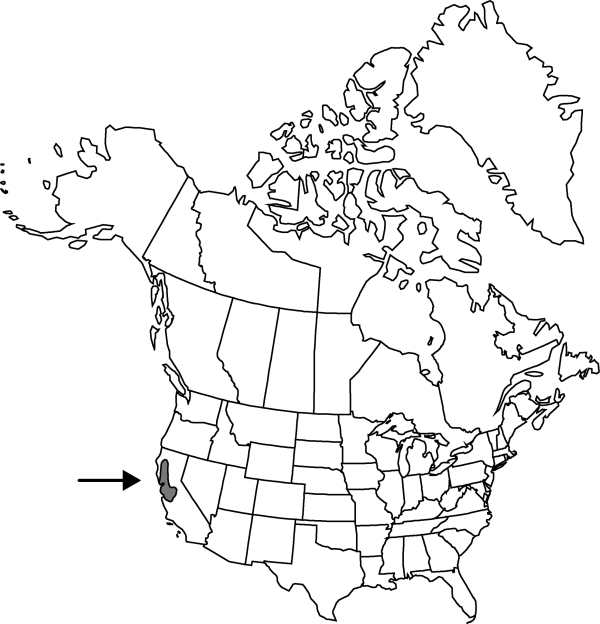Atriplex joaquiniana
Proc. Biol. Soc. Wash. 17: 99. 1904.
Herbs, monoecious or subdioecious, erect, sparsely branched, (1–)3–10 dm; branches obtusely angled, rather rigidly ascending, finely farinose when young. Leaves mostly alternate; petiole 0.5–2.5 cm, becoming shorter or subsessile in distal ones; blade deltoid to rhombic-ovate or lanceolate, (10–)15–50(–70) × 8–40 mm, base rounded, truncate, or broadly cuneate, margin irregularly sinuate-dentate or repand-dentate to entire, sometimes subhastate, apex obtuse to acute; distal blades often narrower and sometimes entire except for basal lobes. Flowers in dense or interrupted, naked, simple or paniculate spikes mainly 5–8 mm thick, staminate ones 4-merous. Fruiting bracteoles densely packed on rachis, sessile, ovate-oblong or rounded-deltoid, (2–)2.5–3(–4.5) mm, united only at rounded or truncate base, angled and cristate on faces, thin or spongy-thickened. Seeds dark brown or black, 0.8–1.5 mm; radicle inferior.
Phenology: Flowering summer.
Habitat: Alkali sink scrub or alkaline grasslands
Elevation: 0-200(-300) m
Discussion
Atriplex joaquiniana commonly occurs with Distichlis spicata, Allenrolfea occidentalis, Suaeda moquinii, Frankenia salina, Hordeum depressum, Spergularia macrotheca, and various annual species. H. M. Hall and F. E. Clements (1923) placed the relationship of this very distinctive California endemic with the Atriplex patula complex, with which one can make out a distant affinity. It differs from all other members previously treated within that complex in the small, more or less quadrangular fruiting bracteoles, which are typically crested on one or both elevated faces and have entire or less commonly dentate margins. The bracteoles are borne in very compact simple or paniculate spikes.
Selected References
None.
